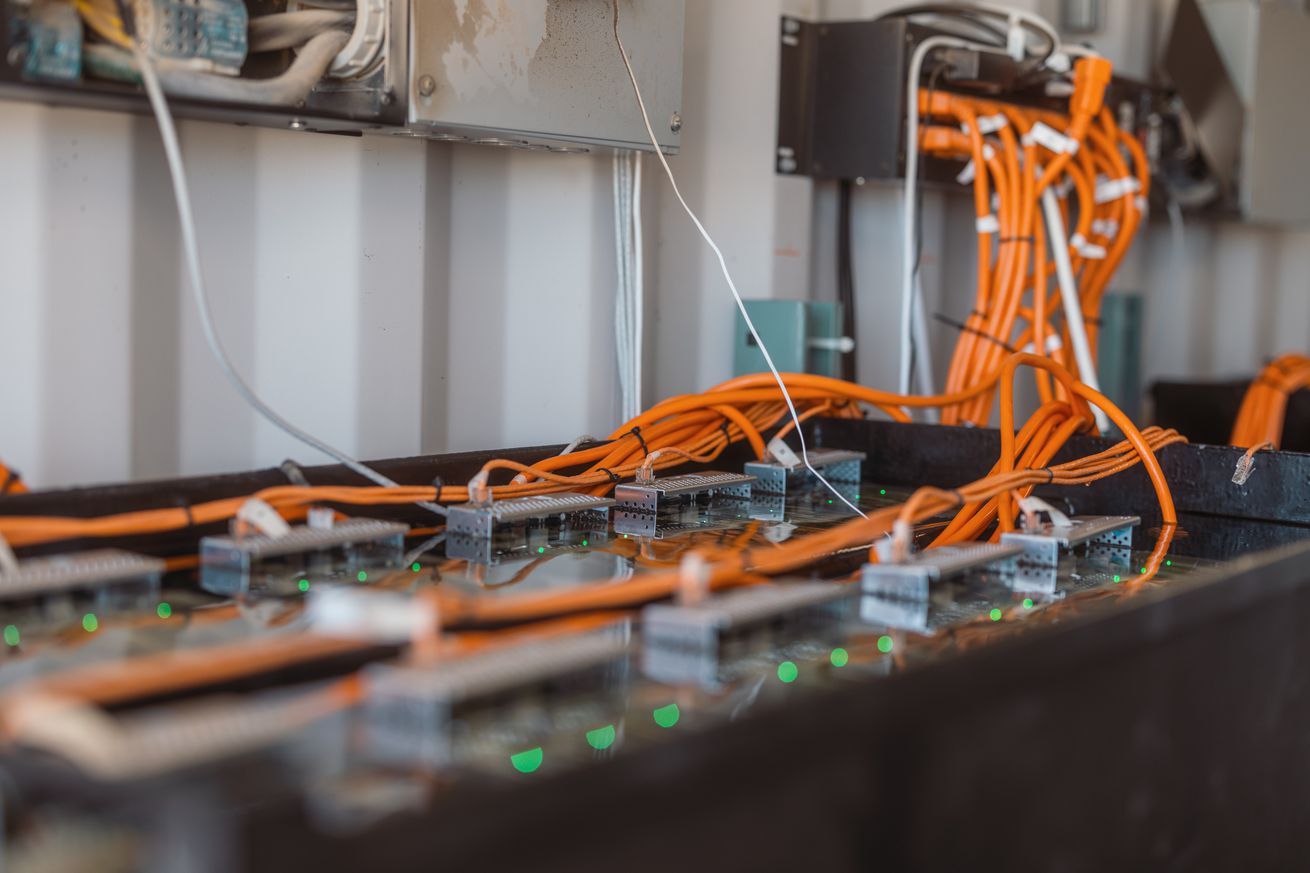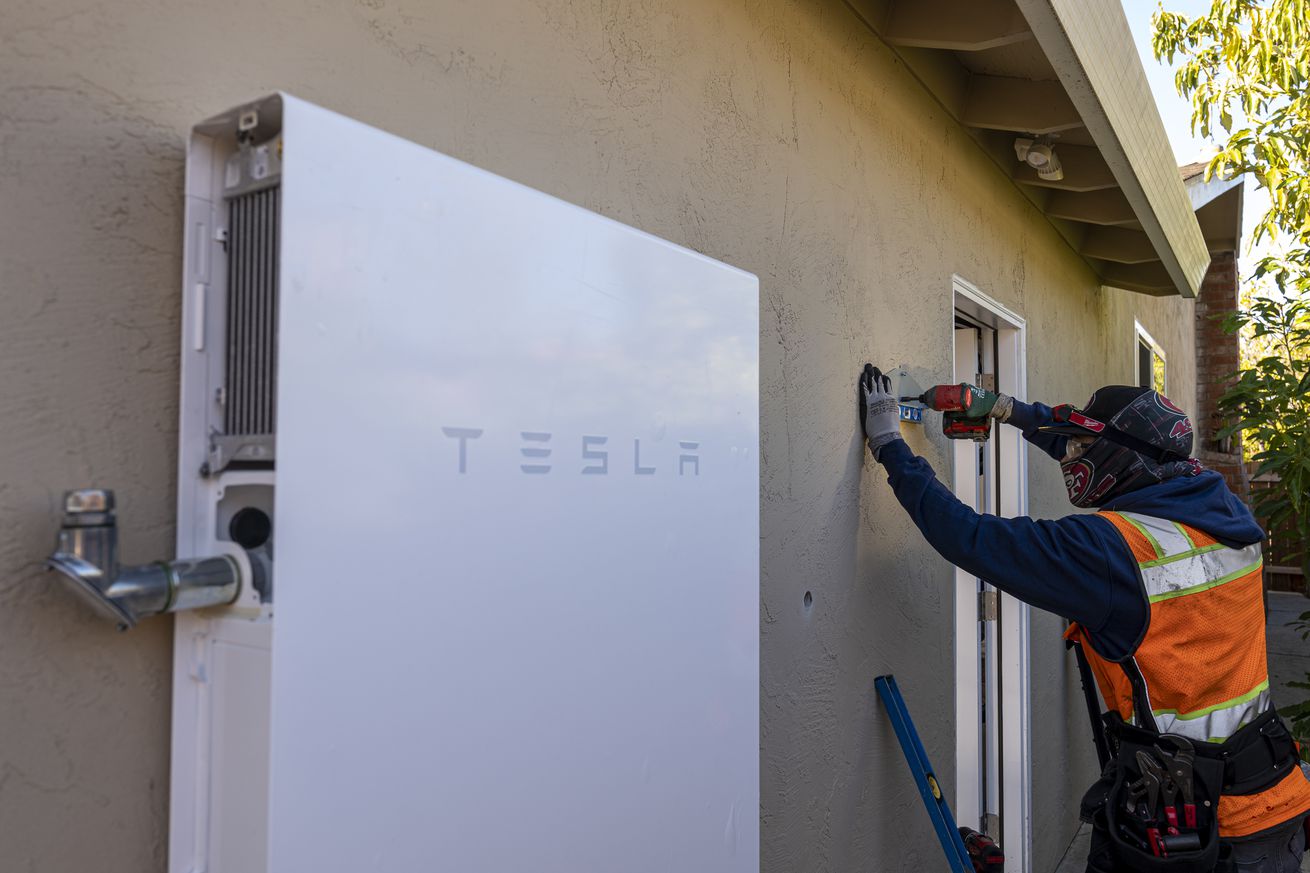The Verge - Environments |
- This site lets you listen to nature sounds from all over the world
- Bitcoin’s energy use drops following price plunge
- Tesla partners with California utility on virtual power plant
| This site lets you listen to nature sounds from all over the world Posted: 24 Jun 2022 11:36 AM PDT  For people who love discovering new sounds, there's an intriguing new site that collects soundscapes from around the world. The site, Earth.fm, bills itself as "Like Spotify, but for natural soundscapes." You can listen to bird species in Malaysia or India or forest sounds in Ghana. The sounds are gathered from numerous contributors who have experience recording the natural world in places including Brazil, Spain, Norway, New Zealand, and the United Kingdom. The website features sounds from locations like national parks and the everglades. Users can create their own specialized playlists of sounds available on Earth.fm, zipping from Brazil to Egypt in a matter of minutes. /cdn.vox-cdn.com/uploads/chorus_asset/file/23650040/Screen_Shot_2022_06_24_at_1.04.28_PM.png) The website notes studies in its About Us page that show the benefits of soundscapes on someone's well-being, including the positive effect of water sounds and bird sounds for stress. The site also functions as a kind of conservation tool, noting that "soundscapes are increasingly scarce as we humans continue to destroy the natural ecosystems which produce them." In addition to listening to each of the soundtracks, you will also be introduced to environmental non-profits like some dedicated to planting trees and nature restoration. (The non-profits may or may not be local to the areas that are tied to a specific recorded soundscape.) Earth.fm does add new sounds every three days for a new experience. If you're looking for a moment of zen, it's a great reminder that there's a beautiful, noisy world out there. |
| Bitcoin’s energy use drops following price plunge Posted: 24 Jun 2022 11:21 AM PDT  After taking a nosedive in June, the price of Bitcoin has stayed so low that it's forcing the blockchain's massive electricity use to similarly dip. Over the past couple weeks, Bitcoin's energy consumption has dropped by more than a third, according to estimates of annualized electricity use by digital currency economist Alex de Vries on his website digiconomist.net. Bitcoin's energy hunger, which has alarmed environmentalists and consumer advocates concerned about pollution and utility prices, comes from the process of mining new tokens. Bitcoin miners earn new tokens by validating transactions through an inherently energy-inefficient process, using specialized machines to solve complex puzzles. All that computing by all those machines has led to an energy appetite rivaling that of entire nations. Bitcoin's annualized energy consumption has fallen from about 204 terawatt-hours (TWh) per year on June 11th to around 132 TWh per year on June 23rd. But even though its electricity use has plunged, it's still very high — roughly equivalent to the amount of electricity Argentina uses in a single year. Just how much energy the Bitcoin network uses is tied to its value. The more valuable it is, the more incentive there is for miners to ramp up operations — perhaps by buying new machines. The price of Bitcoin peaked in November 2021, reaching around $69,000. Since that peak, de Vries estimated that the blockchain's annual electricity consumption ranged between roughly 180 and 200 TWh. That's about the same amount of electricity used by all the data centers in the world every year. Bitcoin's value has fallen for months, but it didn't result in an immediate drop in energy use because the price stayed above a key threshold. If the price stays above $25,200, the Bitcoin network can sustain mining operations that use up about 180 TWh annually, according to research de Vries published last year. Since miners have already invested in their machines, they'll likely keep them running as long as they can turn some profit earning tokens. The problem is that if the price of Bitcoin gets too low, then miners risk losing money in electricity costs. So they might pause or retire older, less efficient machines that are becoming unprofitable, which is what we're starting to see now. The value of a Bitcoin has lingered below $24,000 since June 13th. "We're getting to price levels where it is becoming more challenging [for miners]," de Vries told The Verge that day. "Where it's not just limiting their options to grow further, but it's actually going to be impacting their day-to-day operations." And it's not just Bitcoin. Ethereum uses the same energy-intensive process to maintain its ledger. Its price has similarly plummeted this month, although it has rebounded somewhat over the past week. Ethereum's estimated electricity use yesterday was nearly half of what it was in late May. There's been a big push to clean up cryptocurrencies. Some blockchains are much less energy-intensive because, unlike Bitcoin (and Ethereum for now), they don't use puzzle-solving to validate transactions. Using renewable energy can get rid of emissions, but skeptics are still worried about crypto miners competing with nearby residents for electricity in that scenario. There's even been a Crypto Climate Accord proposed to figure out how to get rid of emissions. The problem they're all trying to solve will continue as long as some blockchains like Bitcoin continue to eat up vast amounts of electricity. |
| Tesla partners with California utility on virtual power plant Posted: 23 Jun 2022 01:57 PM PDT  Tesla and California utility PG&E launched a new program that will pay eligible Powerwall owners to send extra electricity to the grid when it's vulnerable to blackouts. Working together, the Powerwalls create a "virtual power plant" that can help keep the lights on during emergencies or energy shortages. By signing up, Powerwall owners will receive $2 for every additional kilowatt-hour they feed to the grid during designated "events" when the grid is under a lot of stress. That includes any time the California grid operator, CAISO, issues an energy alert, warning or emergency. Tesla started a similar beta program with PG&E and a couple of other utilities last July, but that was a voluntary program with no payouts. Now, with a monetary incentive to entice participants, the program could grow large enough to become a significant backup energy source in California — and a clean one at that. Participants would "help form the largest distributed battery in the world — potentially over 50,000 Powerwalls," according to Tesla. That distributed battery — or virtual power plant, in other words — can replace gas-fired power plants that typically come online to provide extra juice whenever power demand starts to outpace supply. Tesla already has experience with this in other places. The company has been building out a virtual power plant in Australia over the last several years. And it wants to expand more in the US. Tesla is pushing the grid operator in Texas to change rules that would allow its customers to earn money for participating in a virtual power plant program. The company launched a demonstration project earlier this year that asks Powerwall owners to volunteer to participate to show the grid operator how such a program might work. For now, without any rule changes, Tesla is offering the volunteers a $40 Tesla gift card "as a token of appreciation." In California, PG&E customers who own a Powerwall can sign up to join the virtual power plant through the Tesla app. Once they're in the program, called the Emergency Load Reduction Program, they'll start receiving push notifications ahead of events when the grid needs emergency support. To keep some backup power for themselves, they'll be able to specify a "backup reserve level." Tesla won't discharge the battery below that level. After accumulating $2 for every additional kWh sent to the grid, participants will receive payments from Tesla "on an annual basis, or on a more frequent basis as determined by Tesla." For this season, participants can expect to be paid by the end of March 2023, according to Tesla. California's grid is particularly stressed this summer. Energy demand typically rises during hot months while people blast their air conditioners. To make things worse, an extreme drought is forecast to cut the state's hydroelectricity supply in half this season. Hot, dry weather also raises the risk of wildfire, so PG&E has made a habit of implementing preemptive power outages in an effort to prevent live power lines from sparking blazes. |
| You are subscribed to email updates from The Verge - Environments. To stop receiving these emails, you may unsubscribe now. | Email delivery powered by Google |
| Google, 1600 Amphitheatre Parkway, Mountain View, CA 94043, United States | |
No comments:
Post a Comment